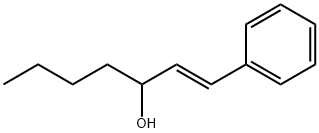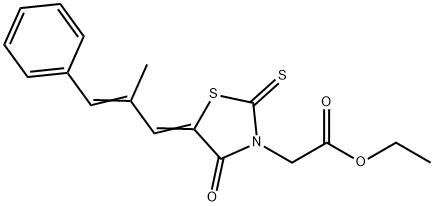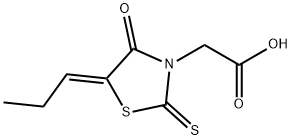Sodium chloroacetate
Synonym(s):Chloroacetic acid sodium salt;Sodium chloroacetate
- CAS NO.:3926-62-3
- Empirical Formula: C2H2ClNaO2
- Molecular Weight: 116.48
- MDL number: MFCD00002684
- EINECS: 223-498-3
- SAFETY DATA SHEET (SDS)
- Update Date: 2024-12-18 14:15:32

What is Sodium chloroacetate?
Chemical properties
Sodium chloroacetate is a white crystalline powder. It is soluble in water. It may be toxic ingestion or inhalation.
Sodium chloroacetate is a reactive and toxic material, so it is hydrolyzed to glycolic acid nearly quantitatively at the end of the production cycle. Chloroacetic acid always contains traces of dichloroacetic acid, a toxic and unreactive material that appears on the California Prop.65 list.
The Uses of Sodium chloroacetate
Sodium chloroacetate is the sodium salt of chloroacetic acid. It is used to prepare weed killers, dyes, vitamins and active pharmaceutical ingredients. It is also used as an odor agent, surface active agent and viscosity adjustor. Sodium dihydroxyethyltallow glycinate is the condensation product of dihydroxyethyl tallow amine and sodiumchloroacetate.It is used as a thickeningagent and asurfactant.
The Uses of Sodium chloroacetate
Sodium chloroacetate is used to prepare dyes and active pharmaceutical ingredients. It is also used as an odor agent, surface active agent and viscosity adjustor.
General Description
Chloroacetic acid sodium salt is a white colored powdered solid. Chloroacetic acid sodium salt is soluble in water.Chloroacetic acid sodium salt may be toxic ingestion or inhalation. Sodium chloroacetate is used as a contact herbicide and a component in other herbicides, an intermediate in the production of carboxymethyl-cellulose, and other synthetic organic chemicals.
Air & Water Reactions
Chloroacetic acid sodium salt is soluble in water.
Reactivity Profile
Salts, basic, such as Chloroacetic acid sodium salt, are generally soluble in water. The resulting solutions contain moderate concentrations of hydroxide ions and have pH's greater than 7.0. They react as bases to neutralize acids. These neutralizations generate heat, but less or far less than is generated by neutralization of the bases in reactivity group 10 (Bases) and the neutralization of amines. They usually do not react as either oxidizing agents or reducing agents but such behavior is not impossible.
Health Hazard
Highly toxic, may be fatal if inhaled, swallowed or absorbed through skin. Avoid any skin contact. Effects of contact or inhalation may be delayed. Fire may produce irritating, corrosive and/or toxic gases. Runoff from fire control or dilution water may be corrosive and/or toxic and cause pollution.
Fire Hazard
Non-combustible, substance itself does not burn but may decompose upon heating to produce corrosive and/or toxic fumes. Containers may explode when heated. Runoff may pollute waterways.
Flammability and Explosibility
Non flammable
Biochem/physiol Actions
Actin plays an important role in cell motility, structure and integrity. Smooth muscle actin-α (SMA)/ α2-smooth muscle actin (ACTA2) interacts with β-myosin heavy chain and helps in vascular smooth muscle cell contraction. The encoded protein modulates the expression of c-MET (tyrosine-protein kinase Met) and focal adhesion kinase (FAK) in human lung adenocarcinoma cells, which positively and selectively mediates tumor progression. Mutation in the gene expression leads to thoracic aortic aneurysms and dissections (TAAD).
Safety Profile
Poison by ingestion and intraperitoneal routes. When heated to decomposition it emits toxic fumes of Cland NazO. Used as an herbicide
Properties of Sodium chloroacetate
| Melting point: | 199 °C (dec.)(lit.) |
| Density | 1.87[at 20℃] |
| vapor pressure | 0.001Pa at 20℃ |
| Flash point: | 270°C |
| storage temp. | -20°C |
| solubility | 820g/l |
| form | Crystalline Powder |
| color | White |
| PH | 4.5-9.0 (50g/l, H2O, 20℃) |
| Water Solubility | 440 g/L (20 ºC) |
| Sensitive | Hygroscopic |
| Merck | 14,2112 |
| BRN | 3597157 |
| Stability: | Stable. Incompatible with strong oxidizing agents. |
| CAS DataBase Reference | 3926-62-3(CAS DataBase Reference) |
| EPA Substance Registry System | Sodium chloroacetate (3926-62-3) |
Safety information for Sodium chloroacetate
| Signal word | Danger |
| Pictogram(s) |
 Skull and Crossbones Acute Toxicity GHS06  Environment GHS09 |
| GHS Hazard Statements |
H301:Acute toxicity,oral H315:Skin corrosion/irritation H319:Serious eye damage/eye irritation H400:Hazardous to the aquatic environment, acute hazard |
| Precautionary Statement Codes |
P264:Wash hands thoroughly after handling. P264:Wash skin thouroughly after handling. P270:Do not eat, drink or smoke when using this product. P273:Avoid release to the environment. P301+P310:IF SWALLOWED: Immediately call a POISON CENTER or doctor/physician. P302+P352:IF ON SKIN: wash with plenty of soap and water. P305+P351+P338:IF IN EYES: Rinse cautiously with water for several minutes. Remove contact lenses, if present and easy to do. Continuerinsing. |
Computed Descriptors for Sodium chloroacetate
Sodium chloroacetate manufacturer
Ultra Chemical Works
Satyajit Chemicals Pvt Ltd
S.R. Drugs And Intermediates Pvt., Ltd.
Valentis Laboratories Pvt. Ltd.
Patel Industries
New Products
(S)-3-Aminobutanenitrile hydrochloride 4-Methylphenylacetic acid N-Boc-D-alaninol N-BOC-D/L-ALANINOL Tert-butyl bis(2-chloroethyl)carbamate N-octanoyl benzotriazole 3-Morpholino-1-(4-nitrophenyl)-5,6-dihydropyridin- 2(1H)-one Furan-2,5-Dicarboxylic Acid S-2-CHLORO PROPIONIC ACID ETHYL ISOCYANOACETATE 2-Bromo-1,3-Bis(Dimethylamino)Trimethinium Hexafluorophosphate 4-IODO BENZOIC ACID 3-NITRO-2-METHYL ANILINE 1-(2,4-DICHLOROPHENYL) ETHANAMINE (2-Hydroxyphenyl)acetonitrile 4-Bromopyrazole 5,6-Dimethoxyindanone 2-(Cyanocyclohexyl)acetic acid 4-methoxy-3,5-dinitropyridine 1-(4-(aminomethyl)benzyl)urea hydrochloride 2-aminopropyl benzoate hydrochloride diethyl 2-(2-((tertbutoxycarbonyl)amino) ethyl)malonate tert-butyl 4- (ureidomethyl)benzylcarbamate Ethyl-2-chloro((4-methoxyphenyl)hydrazono)acetateRelated products of tetrahydrofuran



![3-Thiazolidineacetic acid, 5-[(2Z)-2-methyl-3-phenyl-2-propen-1-ylidene]-4-oxo-2-thioxo-, (5E)-](https://img.chemicalbook.in/CAS/20200515/GIF/124782-64-5.gif)


![2-[(5Z)-5-[(E)-2-methyl-3-phenylprop-2-enylidene]-2,4-dioxo-1,3-thiazolidin-3-yl]acetic acid](https://img.chemicalbook.in/CAS/20180723/GIF/794510-29-5.gif)

You may like
-
 Sodium Monochloro Acetate 99%View Details
Sodium Monochloro Acetate 99%View Details -
 3926-62-3 98%View Details
3926-62-3 98%View Details
3926-62-3 -
 Sodium chloroacetate CAS 3926-62-3View Details
Sodium chloroacetate CAS 3926-62-3View Details
3926-62-3 -
 Sodium chloroacetate CAS 3926-62-3View Details
Sodium chloroacetate CAS 3926-62-3View Details
3926-62-3 -
 Sodium chloroacetate 98%View Details
Sodium chloroacetate 98%View Details
3926-62-3 -
 Sodium chloroacetate 3926-62-3 98%View Details
Sodium chloroacetate 3926-62-3 98%View Details
3926-62-3 -
 Sodium chloroacetate 95% CAS 3926-62-3View Details
Sodium chloroacetate 95% CAS 3926-62-3View Details
3926-62-3 -
 SODIUM MONOCHLOROACETATE For Synthesis CAS 3926-62-3View Details
SODIUM MONOCHLOROACETATE For Synthesis CAS 3926-62-3View Details
3926-62-3